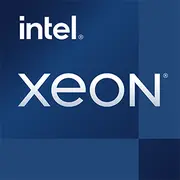Intel Xeon E3-1535M v5

Intel Xeon E3-1535M v5: A Processor for Professionals in the Hybrid Work Era
Relevance in 2025 and Key Features
Although the Intel Xeon E3-1535M v5 was released back in 2016, its popularity in the corporate sector remains strong. This processor, designed for mobile workstations, is still found in new devices in 2025 due to its reliability and specialized functions. Let's explore who it is suitable for today and how it compares to modern counterparts.
Architecture and Manufacturing Process: The Skylake Legacy
14nm and Four Cores with Hyper-Threading
Based on the Skylake microarchitecture (2015), the Xeon E3-1535M v5 is manufactured using a 14nm process. It has 4 cores and 8 threads thanks to Hyper-Threading. The base frequency is 2.9 GHz, with the ability to boost up to 3.8 GHz in turbo mode. In contrast, modern Intel 13th generation processors (2023) use a 7nm process, but the Xeon remains relevant due to its optimization for professional tasks.
Integrated Graphics P530: Not for Gaming, But for Workloads
The integrated Intel HD Graphics P530 (24 EU) supports DirectX 12 and OpenGL 4.4, but its primary purpose is to accelerate rendering in CAD applications (such as AutoCAD) and video processing via the Quick Sync API. It is weak for gaming: even in 2025, it can only handle projects like Dota 2 at low settings (30–40 FPS).
Architecture Features
- ECC Memory Support: Critical for workstations where data errors are unacceptable.
- AVX2 Instructions: Accelerates calculations in scientific and engineering programs.
- vPro: Remote management and hardware protection for corporate networks.
Power Consumption and TDP: A Balance Between Power and Portability
TDP 45W: What Does It Mean for Laptops?
With a thermal design power of 45W, the processor requires active cooling, limiting its use in ultrabooks. Typical devices with this CPU are hefty workstations with a chassis thickness of 25mm or more (for instance, the Dell Precision 7510). In idle mode, power consumption drops to 10–15W, but under full load (rendering, code compilation), it can reach 55–60W.
Power-Saving Technologies
- Intel SpeedStep: Dynamic frequency scaling to reduce power consumption.
- Turbo Boost 2.0: Temporary overclocking for demanding tasks without overheating.
Performance: How Is It Holding Up in 2025?
Geekbench 6: Modest but Stable Results
- Single-Core: 1196 — comparable to Intel Core i5-1135G7 (2020).
- Multi-Core: 3744 — on par with Ryzen 5 5500U (2021).
Real-World Use Cases
1. Office Work: In Chrome with 20+ tabs, Excel, and Zoom, the processor does not struggle (40–60% load).
2. Multimedia: 4K video conversion in HandBrake takes about 25 minutes (compared to 12–15 minutes for the Apple M2).
3. Gaming: Only for less demanding titles — Minecraft, CS2 (60 FPS at low settings).
Turbo Boost: When It Engages and How It Works
At temperatures below 70°C, the processor automatically boosts one core to 3.8 GHz. For example, when opening a heavy project in Photoshop or running a virtual machine. However, under sustained loads (like rendering), the frequency stabilizes around 3.2–3.4 GHz.
Use Cases: Who Should Choose It?
Target Audience
1. Engineers and Designers: ECC memory support and stability in CAD applications.
2. Data Analysts: Accelerated calculations in MATLAB or Python (thanks to AVX2).
3. Corporate Users: vPro technologies for IT administration.
Who Should Avoid It?
- Gamers: The integrated graphics are inadequate even for Fortnite.
- Battery Life Enthusiasts: Laptops with this CPU rarely last more than 5–6 hours.
Battery Life: Compromises on Power
Battery Runtime
With a battery capacity of 90Wh (for example, HP ZBook 15 G3), the device yields:
- 6–7 hours: web surfing, office tasks.
- 2–3 hours: rendering or compiling.
How to Enhance Battery Life?
- Activate "Power Saver" mode in Windows.
- Disable Turbo Boost through BIOS.
Comparison with Competitors: Where Xeon Excels and Falls Short
AMD Ryzen Pro 5750G (2025)
- Pros: 8 cores, 16 threads, better multi-thread performance.
- Cons: No ECC memory in mobile versions.
Apple M3 (2024)
- Pros: 2–3 times higher energy efficiency, 18 hours of battery life.
- Cons: Incompatibility with Windows software (e.g., SolidWorks).
Intel Core i7-12800H (2023)
- Pros: 14 cores, DDR5 support.
- Cons: Higher price (laptops from $2200).
Pros and Cons of the Processor
Strengths
- Reliability and ECC support.
- Optimization for professional software.
- Competitive price compared to new Xeon models (laptops start from $1800).
Weaknesses
- Outdated 14nm manufacturing process.
- Weak graphics.
- Limited battery life.
Recommendations for Choosing a Laptop
Types of Devices
- Workstations: Dell Precision 7520, HP ZBook 15 G5.
- Mobile Workhorses: Lenovo ThinkPad P50 (updated version for 2025).
What to Look for
1. Cooling: Two fans and copper heat pipes are essential.
2. Memory: At least 32GB DDR4 with ECC.
3. Display: A 4K panel with 100% sRGB coverage for designers.
Final Conclusion: Is It Worth Buying in 2025?
The Intel Xeon E3-1535M v5 is a specialized processor for those who require stability and compatibility with professional software. It is suitable for:
- Corporations upgrading their workstation fleet.
- Engineers working with outdated but stable hardware.
Alternatives for New Projects: Consider laptops with the Apple M3 or Intel 13th generation processors if high energy efficiency is needed. However, for niche tasks, the Xeon 1535M v5 remains a budget-friendly and proven option.
Prices in 2025: New laptops with this processor range from $1800 to $2500, depending on configuration.
Basic
CPU Specifications
Memory Specifications
GPU Specifications
Miscellaneous
Benchmarks
Compared to Other CPU
Share in social media
Or Link To Us
<a href="https://cputronic.com/en/cpu/intel-xeon-e3-1535m-v5" target="_blank">Intel Xeon E3-1535M v5</a>